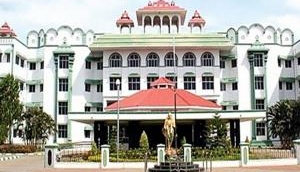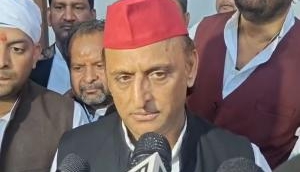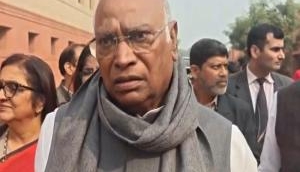
Karnataka has been rocked by series of protests and incidents of violence ever since the Supreme Court ordered the state government to release Cauvery water to Tamil Nadu.
Farmers and pro-Karnataka groups protesting against alleged assaults on Kannadigas in Tamil Nadu burnt vehicles and threw stones at Tamil Nadu registered vehicles.
Also read: Cauvery Row: Karnataka CM Siddaramaiah writes letter to Tamil Nadu CM Jayalalithaa
What is the Cauvery water issue?
To understand the issue, first you need to know about the Cauvery. The river originates in the Brahmagiri ranges of Karnataka's Kodagu district and flows through large parts of Karnataka and Tamil Nadu and also some parts of Kerala and Pondicherry.
Also read: Karnataka releases Cauvery water to Tamil Nadu amid protests
The dispute over Cauvery waters is quite an old issue and dates back to the British Raj.
Till 1883, no attempt was made to utilise Cauvery water for irrigation, but the same year the Diwan of the princely state of Mysore launched a scheme. His primary aim was to increase the revenue to the King's coffers.
The move was resented by the Madras presidency under the British Raj. Thus, began the Cauvery dispute which is yet to be solved.
Timeline of the issue:
The Cauvery row had some respite after two agreements, one of 1892 and the other in 1924, to share the water.
These agreements continued to remain till 1974, when the 50-year agreement came to an end; which led to Karnataka taking initiation in constructing dams and increasing its irrigation area.
1970s-80s: Cauvery Fact Finding Committee found that Tamil Nadu's irrigated lands had grown from an area of 1,440,000 acres to 2,580,000 acres while Karnataka's irrigated area stood at 680,000 acres, resulting in an increased demand of water for Tamil Nadu.
1990: After both the states kept fighting each other and engaged in a legal battle, the Supreme Court directed the Centre to constitute the Cauvery Water Dispute Tribunal (CWDT) in May.
1991: In June, the CWDT gave an interim award and asked Karnataka to release 205 thousand million cubic feet (tmc) to Tamil Nadu every year, then riots followed.
1998: The Central government constitutes Cauvery River Authority to ensure the implementation of the interim award of CWDT.
2007: 16 years after the interim order, the CWDT gave its final order and of the available 740 tmc ft water, the tribunal allocated 419 tmc ft to Tamil Nadu, 270 tmc ft to Karnataka, 30 tmc ft to Kerala and 7 tmc ft to Puducherry.
However, the dispute continued after both the States filed petitions with the tribunal to review the decision.
2012: PM Manmohan Singh directs Karnataka to release 9,000 cusecs of Cauvery water to Tamil Nadu. Both the CMs - Jayalalithaa and Jagadish Shettar term it "unacceptable"
The Supreme Court slams the Karnataka government for not complying with the PM's direction.
2013: The Centre notifies the final award of the CWDT. The Central government was mandated to constitute the Cauvery Management Board (CMB) simultaneously with the gazette notification of the final award of the Tribunal.
Tamil Nadu approaches apex court to give directions to the water ministry for constitution of the Cauvery Management Board.
The state also moved Supreme Court, seeking Rs 2,480 crore in damages from Karnataka for not following the orders of the CWDT.
The Union water resources secretary chairs the first meeting of the supervisory committee in which Tamil Nadu demanded its share of water for June as stipulated in the award.
Water cannot be released as and when TN demands, claimed the Karnataka government.
Tamil Nadu files contempt petition in the Supreme Court against Karnataka CM Siddaramaiah for his defiant stand against the Supervisory Committee
2016: SC directs Karnataka to release 15,000 (now it has been revised to 12,000) cusecs.
Also read:Cauvery row: SC orders Karnataka to release less water; says people can't take law into their hands
First published: 12 September 2016, 6:22 IST






![BJP's Kapil Mishra recreates Shankar Mahadevan’s ‘Breathless’ song to highlight Delhi pollution [WATCH] BJP's Kapil Mishra recreates Shankar Mahadevan’s ‘Breathless’ song to highlight Delhi pollution [WATCH]](https://images.catchnews.com/upload/2022/11/03/kapil-mishra_240884_300x172.png)

![Anupam Kher shares pictures of his toned body on 67th birthday [MUST SEE] Anupam Kher shares pictures of his toned body on 67th birthday [MUST SEE]](https://images.catchnews.com/upload/2022/03/07/Anupam_kher_231145_300x172.jpg)






